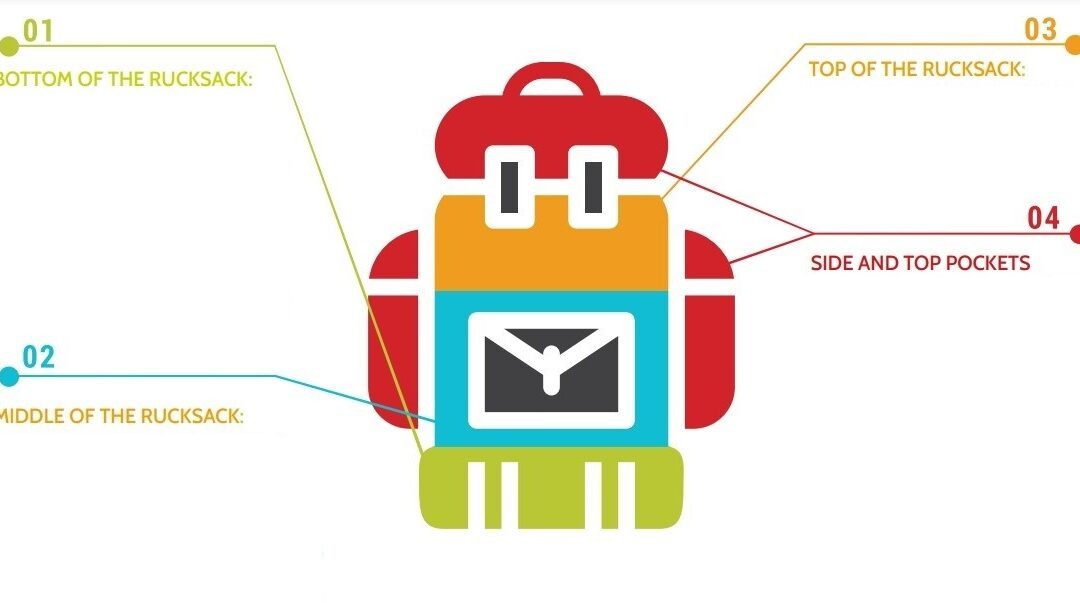A task that seems daunting but is essential to the smooth running of your expedition, diligently packing your rucksack will make it easier for you to find what you need, when you need it. Here is our guide for an expedition ready rucksack.
*In order to carry everything you need for a number of nights a 60-70L capacity rucksack should be ample, ideally with outer storage pockets.
*Triple check your kit list; don’t take extra stuff.
*Your rucksack should weigh no more than a quarter of your body weight: If possible, regardless of your body weight, try to keep the pack below 15kgs.
A Rucksack has 4 sections (see above picture):
Bottom of the rucksack; pack items you will not need during the day. This is basically your sleeping bag, but other items such as a tent flysheet or clothes could go here if you have room. In most rucksacks this is a separate section, allowing easy access at camp.
Middle of the rucksack; pack bulkier and heavier items, such as cooking stoves, gas canisters, food, tent parts and clothes. Always try and pack the heaviest items towards the top of this section and close to your back for balance. You can pack clothes around items to stop them rattling around.
Top of the rucksack; pack bulky, lightweight items that you may need during the day, such as a fleece, waterproof jacket and trousers, survival bag/shelter and first aid kit.
Side and top pockets; pack smaller things that you will need during the day or that you might need in a hurry, such as water, snacks, lunch, map, compass, whistle, torch and batteries, mobile phone, blister plasters and sun hat/sunscreen. Also consider keeping a side pocket free for your meths bottle if using one.
Things to avoid:
*Relying on your rucksack raincover to keep everything dry; it really won’t! You must line your rucksack with a large heavy duty rucksack liner or rubble sacks, and additionally pack your sleeping bag and clothes inside separate sealed waterproof bags or rubble sacks.
*Don’t forget to carefully waterproof your sleeping mat if it’s on the outside of the rucksack.
*Relying on bin bags for waterproofing; they tear easily.
*Packing lots into one or two rubble sacks; you will have trouble finding stuff in the chaos.
*Having kit swinging on the outside of your rucksack; this puts you off-balance, is tiring, and you might lose things.
*Using your map case as a handbag; the map is likely to get wet-through if you keep going in and out!
If you’re looking to increase your navigation skills to be expedition ready or delve into the world of foraging, shelter building and fire lighting, take a look at our Navigation and Bushcraft courses.

